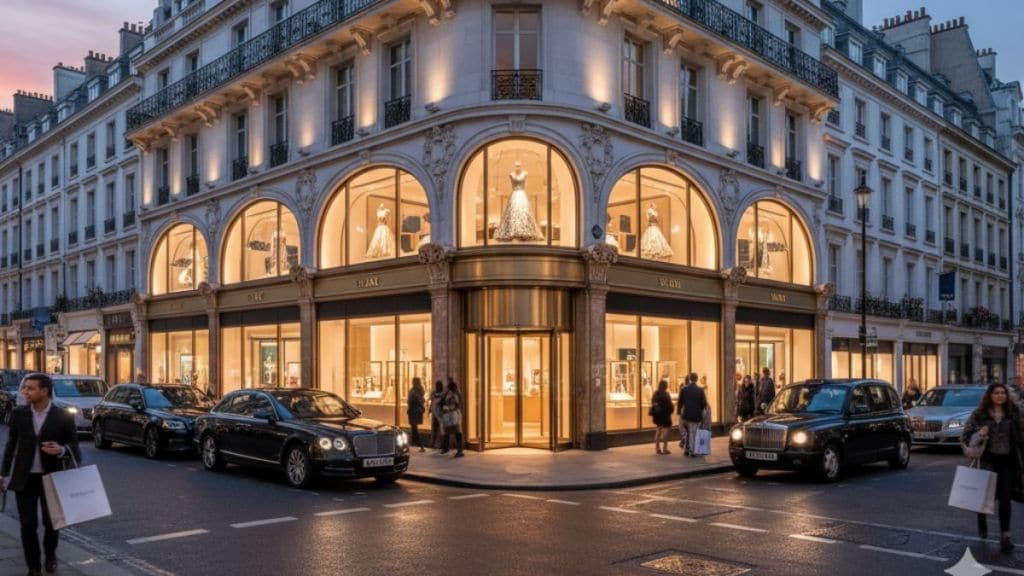A luxury boutique has been selling the same handbag for five years. Same leather, same craftsman’s hours, same hardware. Yet today it costs nearly double what it did in 2019. The saleswoman doesn’t apologize for the price, she apologizes for the wait list. This is luxury’s great paradox: as prices soared beyond reason, demand only intensified. Until suddenly, it didn’t.
For fifteen years, luxury brands seemed unstoppable. Now reality has hit. Bain & Company reports that personal luxury goods contracted by 2% in 2024, marking the first real fall since the 2008 financial crisis (ex-Covid). Alarmingly, only one in three luxury brands managed any growth at all, down from near universal expansion just two years ago. This isn’t just a correction. It’s a wake-up call about strategies that once looked brilliant but now seem reckless.
The Price of Greed
Consider pricing. A Chanel Medium Classic Flap that cost $5,800 in 2019 now commands over $11,100. This 91% surge dwarfs the ~22-24% inflation over the same period. For half a decade, this strategy worked brilliantly. Brands discovered they could mint money simply by raising prices, with McKinsey calculating that such increases drove 80% of the industry’s growth post pandemic. It was intoxicating while it lasted.
The China Syndrome
China’s role in this shift also cannot be overstated. The market that drove two decades of expansion has contracted by ~20% according to Bain’s data. The wealth effect that once propelled consumption has now reversed. Property market declines have created a psychological brake that no amount of marketing can overcome. Chinese consumers, who purchase luxury globally, have retreated transforming what might have been a regional correction into a worldwide phenomenon.
Yet something fascinating is happening. While Kering watches its operating margins collapse from 28% to under 13%, Hermès keeps sailing along with margins above 40%. The secret isn’t mysterious but philosophical.
The Illusion of Scarcity
In the book, The Luxury Strategy, Jean-Noël Kapferer and Vincent Bastien explain what they call the “anti-laws of marketing”. Where traditional retail chases efficiency, luxury celebrates deliberate inefficiency. Where mass markets expand to meet demand, luxury maintains scarcity even when leaving money on the table. These aren’t quirks but essential elements that create value through exclusivity rather than accessibility.
Consider how Hermès applies these anti-laws. Each Birkin bag requires a single craftsman who has trained for over a year just to work with leather. Production cannot be accelerated. Availability cannot be guaranteed. The waiting list has become part of the mystique. This deliberate constraint seems irrational, yet it generates extraordinary value exactly because it cannot be replicated at scale.
The genius extends beyond manufactured scarcity. Luxury bands have developed what might be called a pyramid of desire. A €66 lipsticks or €470 scarves lets regular people feel part of the brand without compromising the sanctity of five figure handbags. It’s a delicate dance between inclusion and exclusion, democracy and aristocracy.
India to the rescue?
McKinsey projects India’s luxury market will nearly double to $14 billion by 2032. Global brands are adapting well, weaving local cultural elements into their offerings and establishing flagship presence in premium retail spaces.
But India probably can’t be the next China. High import duties make a Rolex cost significantly more in Mumbai than in Dubai, where wealthy Indians already shop. The infrastructure that enabled China’s lightning-fast luxury adoption remains nascent. India represents evolution, not revolution.
The path forward demands uncomfortable choices. The consensus points toward gradual recovery rather than dramatic rebound. But recovery to what? The old playbook of raising prices, expanding distribution, and chasing volume has reached its limits. The customers who departed won’t return for more of the same at higher prices.
This isn’t just about handbags and watches. In every industry where emotional value exceeds functional utility, where identity trumps features, the same dynamics apply. The luxury crisis offers a masterclass in what happens when businesses mistake pricing power for brand power, when they confuse growth with greatness.
As I watch this drama unfold, I’m reminded that every industry eventually faces its moment of truth when the assumptions that built fortunes suddenly become the beliefs that destroy them. For luxury, that moment is now. The question isn’t whether the industry will survive; it will. The question is which brands will emerge from this situation stronger, and which will discover that they were never really luxury at all, just expensive.
The rules of desire are counterintuitive. In luxury, refusing a sale can build more value than making it. Inefficiency can generate higher returns than optimization. Tradition can matter more than innovation. These aren’t bugs in the system, they’re features.
The brands that grasp these paradoxes won’t just weather the storm. They’ll use it to prove what they’ve always claimed: that true luxury exists beyond the reach of economic cycles, in that peculiar space where logic ends and magic begins.
The others?
They’re about to learn that without magic, all you’re selling is stuff, and stuff, no matter how expensive, is just stuff.
This article is based on a presentation delivered at PPFAS Mutual Fund’s Financial Opportunities Forum. The full presentation can be viewed here.
Jinal Jain is an Equity Research Analyst at PPFAS Mutual Fund, specialising in consumer-facing industries across both Indian and global markets.
Disclaimer: The views and opinions expressed in this communication are solely mine and do not necessarily reflect the official policy or position of PPFAS Mutual Fund. Any content provided is for informational purposes only and should not be interpreted as professional or organizational advice.


